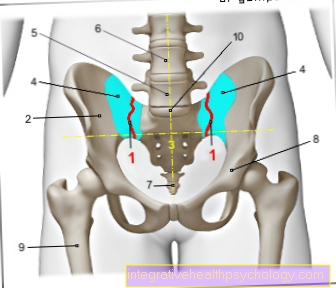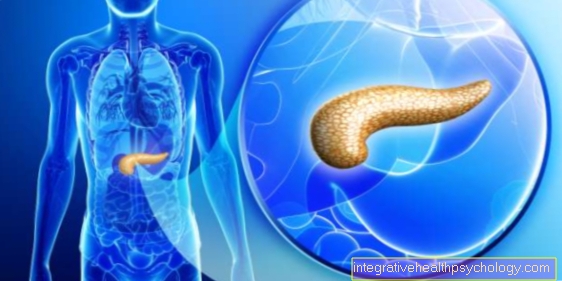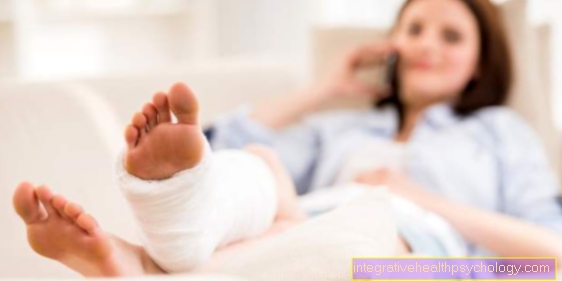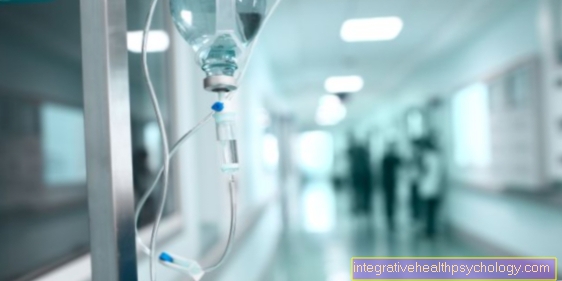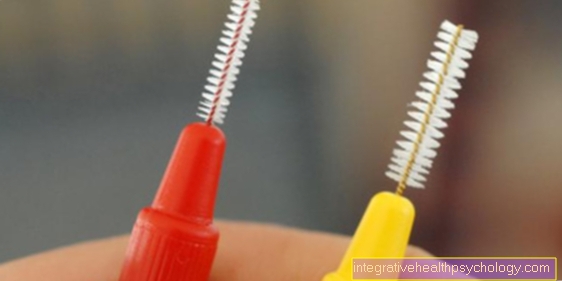Operate drooping eyelids? - You should know that!
introduction
Drooping eyelids are a specific shape of the eyelids. The eyelids are not tight, but hang down a little.
This usually results in cosmetic restrictions, but can also affect vision. During an operation on drooping eyelids, the eyelid tissue is tightened so that the eyelids hang down less slack. Such an operation can usually be carried out easily, but requires an exact medical reason so that the costs can be covered by the health insurance company.
Also read: Everything about drooping eyelids

Areas of application
The areas of application of an operation on drooping eyelids can initially be divided into two large areas.
On the one hand, this concerns the cosmetic / aesthetic area, and on the other hand, there may be a medical consideration for the operation:
- Cosmetic indications:
These are given when there is no medical reason, but the drooping eyelids are primarily perceived as being visually disturbing. In this case, the operation is carried out to improve the appearance, it is called a cosmetic operation. The reasons for this can often be of a psychological nature, as drooping eyelids can be perceived as a flaw and thus have psychological effects on those affected. - Medical consideration:
One speaks of this when the drooping eyelids are designed in such a way that they impair the function of the eye. This is the case, for example, when the drooping eyelids are so pronounced that they impair the field of vision. Such a restriction can be diagnosed with a visual field examination (perimetry). It is an objective consideration for the drooping eyelid surgery.
Another medical indication is when the eyelids can no longer fulfill their function of protecting the eyes. For example, if the eyelid is no longer in direct contact with the eye, the tear film on the eye can be disturbed. The cornea of the eye becomes dry, making it more prone to eye injuries and damage. In this case, too, visual disturbances can occur, which is why an operation of the drooping eyelids is medically indicated.
Which examinations should be done before the operation?
Before the operation, the medical considerations of the operation should first be clarified.
- An examination of the tear film on the eye may be necessary to determine whether the eye is dry. This would be a medical consideration.
- Perimetry (determination of the visual field) is also one of the examinations before the operation, since a visual field restriction also represents a medical surgical position.
- In the case of pronounced drooping eyelids, especially at a young age, psychological reports can also be prepared for medical operation considerations.
- Further examinations before the operation concern personal surgical risks such as a known allergy to narcotics. Further examinations may be necessary here.
- In addition, possible triggers of drooping eyelids such as a malfunction of the thyroid gland should be excluded.
Do you have a racing heart, increased sweating, weight loss, diarrhea and more at the same time? Then also read: Graves disease
Prepare for the operation
- The most important preparation before the operation consists initially of a detailed examination of the drooping eyelids:
Underlying diseases, such as thyroid dysfunction (including Graves' disease), should be ruled out at an early stage. After all, an operation on the drooping eyelids only makes sense if all triggers have been removed and the drooping eyelids do not recede as desired. An examination of the eyes themselves, especially the visual field, should also be performed to find possible medical considerations for the operation. - The next step is to prepare for the search for a suitable clinic:
The drooping eyelid operation can basically be carried out by doctors from two specialist disciplines. Namely by specialists in ophthalmology and specialists in plastic surgery. Ideally, affected persons find out in advance how often the operation is carried out at the respective specialist center. Experience reports from the Internet or from personal contacts can also play an important role when choosing a clinic. - There are often only a few preparations to be made for the day of the operation itself, as it is a short outpatient procedure and usually no inpatient stay is necessary as part of the treatment:
The operation is usually carried out under local anesthesia, but medication can also be used to induce twilight sleep if desired. In this case, it is advisable to come to the operation on an empty stomach (without eating beforehand). However, the exact procedure should be discussed in consultation with the operating specialist center. As a rule, you are not allowed to drive yourself after the operation, so it should be organized in advance how you will get home from the operation and who can support you in the first few hours after the operation.
Also read: Risks of anesthesia
Procedure of the operation
The course of the operation depends on the procedure used. Surgical correction of the drooping eyelids and a laser procedure are available.
After the preliminary examinations, a local anesthetic is performed on the eyelid to be operated. Usually, both eyes are treated in one surgical session, so anesthetic injections are placed on both upper eyelids. After a few minutes the remedy should work, this is checked by touching the eyelids. At the request of the person concerned, a drug can also be used to put you into a twilight sleep. This way you don't notice anything about the operation, but you still don't run the risk of general anesthesia.
In the case of the drooping eyelid surgery, the area to be operated on is first marked, then the cut can be made on the lid using a laser or scalpel. So that there are no noticeable scars after the operation, the incision is made in a naturally existing eyelid furrow. So the scar is hidden in an already existing recess in the eyelid even after the operation. After the cut, excess tissue is removed from the lid. This includes connective tissue as well as fat tissue and muscle mass. In addition, a little skin usually has to be removed so that the eyelid can then be tightened. This is followed by a suture of the previously made cut in the crease of the eyelid already mentioned so that the overall result is as inconspicuous as possible.
What is the follow-up treatment like?
- The follow-up treatment of the operation on drooping eyelids consists of regular cooling of the affected areas in the first few days. If necessary, a mild pain reliever such as Ibuprofen® can be taken for a few days. This is usually prescribed or given by the surgeon.
- A pressure bandage is also applied to minimize bleeding at the operated site. This is changed regularly as part of the early wound control and, depending on the course, can be replaced with normal plasters after a few days.
- It also helps to sleep with a slightly elevated upper body and not lie down completely flat in the first few days after the operation. This means that less fluid reaches the affected area, so that the eyes swell faster.
- In addition, sport and other physical activity should be avoided for a few days. It is also advisable to keep the operated eyelids dry until the threads are pulled (after about a week) or to dry them off as quickly as possible when washing your face or showering.
- If necessary, scar ointments or cortisone ointments are also used in the follow-up treatment. The active ingredients penetrate the tissues of the eyelid and have an anti-inflammatory effect.
What are the risks of the surgery?
- With regard to the risks of an operation on the drooping eyelids, the general risks of any surgical procedure should be pointed out:
There may be reactions to the anesthetic used, as well as the suture material and the plaster. These reactions are mostly allergic in nature and lead to local skin sensitivities, reddening, swelling and blistering, and even severe allergic shock. - The surgical procedure itself can lead to swelling of the operated area, especially within the first few days after the operation. Bleeding and bruising are also common in the first few days after the procedure.
- Since the operation on drooping eyelids is an intrusive method, infections of the eyelid or the eye socket can also occur. Due to the anatomical proximity to the paranasal sinuses and the brain, an infection can spread into the structures mentioned, which can lead to further consequences.
- In rare cases, the operation leads to a deterioration in vision. In addition, structures of the eye can be injured, which can also cause a deterioration in vision or even blindness of the affected eye (in rare cases).
- An operation of the drooping eyelids does not always guarantee a perfect result of the eyelid. The fine scar can usually be placed within a natural crease of the eyelid, so that there are no aesthetic restrictions, but wound healing disorders and pronounced scarring can lead to visible scar tissue and functional restrictions such as hardening of the eyelid.
What scars can be expected?
The scars during an operation on drooping eyelids ideally come to lie in the natural crease of the eyelid. During the operation, an incision is therefore sought in one of the naturally occurring folds at the beginning. This cut can then be used to remove tissue from the eyelid. The suture then also comes to rest in the crease of the eyelid, so that the resulting scar is hardly noticeable. However, excessive scarring can occur, for example, which is noticeable in excess tissue in the area of the eyelid.
What are the costs of the surgery?
Depending on the clinic, the costs of an operation on drooping eyelids are usually around € 2,000 to € 2,500. This cost calculation assumes a complication-free operation with good preconditions and treatment of both eyes.
If only the drooping eyelids are treated, the operation is cheaper than an additional operation on the bags under the eyes (the equivalent of the drooping eyelids on the upper eyelid). Often the eyebrows can also be lifted a little as part of a drooping eyelid operation, which also increases costs.
Read more about the additional corrections that can be made during the smump eyelid surgery:
- Removal of the bags under the eyes
- Eyebrow lift
Other costs include, for example, the choice of the local anesthetic (for example due to allergic reactions to common drugs) and any desired medication for oversleeping the operation. Some well-known clinics sometimes charge a higher price for their good reputation than the standard clinics.
If the drooping eyelid operation is performed for cosmetic reasons, the costs usually have to be paid by the person concerned. Therefore, a discussion with the health insurance company should take place in advance. Anyone who is privately insured or who has taken out private supplementary insurance should also contact the insurance company to find out about possible cost coverage. Usually, however, the people have to pay in advance themselves and may then be able to have costs reimbursed.
In the case of operations for medical reasons, only the contribution to the medication costs remains. These usually amount to around five to ten euros.
When does the health insurance company cover the costs?
The health insurance company usually pays the costs if it is an operation for medical reasons. However, if you visit a renowned specialist clinic, for example, or want extras during the operation, you may have to reckon with a cost contribution. Therefore, a consultation with the health insurance company about the exact extent of the cost coverage should be held before the operation. Operations performed for aesthetic reasons are not covered by health insurance companies.
Can you correct droopy eyelids without surgery?
Correcting drooping eyelids without surgery is particularly useful if the drooping eyelids are caused by a disease.
For example, hormonal disorders can lead to drooping eyelids. The most common cause of eye changes from a metabolic disease is a malfunction of the thyroid gland. Both the over- and under-functioning of the organ can lead to changes in the eyes. Both diseases can be treated with medication; if necessary, the overactive thyroid can also be treated with surgery on the thyroid gland. If the thyroid is set to normal function again, the changes in the eyes can regress so that no surgery on drooping eyelids is necessary.
Other hormonal changes, for example due to stress and / or lack of sleep, can also cause drooping eyelids. In these cases, too, an operation is initially not advisable, as the symptoms can recede somewhat through better sleep hygiene and more balance. If the drooping eyelids are caused by excessive consumption of cigarettes, alcohol or drugs, you should first try to avoid the substances. Age-related drooping eyelids, on the other hand, can usually not be corrected without surgery.
For more information on this topic, we recommend our pages on:
- Drooping Eyelids - How To Get Rid Of Them!
- Tapes for the eyelids
Can you also do that with a laser?
In addition to the classic operation, in which the incision is made on the upper eyelid using a scalpel, a laser-based technique can also be used for the incision. Often a very precise cut is achieved due to the fine computer-controlled handling. However, the excess tissue on the eyelid cannot be removed by laser; in most cases it has to be surgically removed from the eyelid.
Further information on this topic can be found at: Drooping Eyelids - How To Get Rid Of Them!
Duration of the operation
The duration of the operation depends on the extent of the surgical correction. If only the loophole is treated, an operation time of about one to two hours can be assumed. Further measures such as an additional operation on the eye bags or further corrections to the eyebrows require a little more time. However, an operation rarely takes more than two to three hours.
Length of sick leave
The sick leave after an operation on drooping eyelids is usually a few days, but depends on the course after the operation and the profession of the operated person. Anyone who is physically active should take a little longer break than someone who spends their day-to-day work at their desk. Usually the sick leave is a few days to a week at most.
Which doctor does this?
For the operation of the drooping eyelids, two different specialist areas are possible. Often, operations on drooping eyelids are performed by plastic surgeons ("cosmetic surgeons"). This is particularly the case when the therapy is carried out for aesthetic reasons. However, ophthalmologists can also perform the operation, especially if there are medical indications due to restrictions in the field of vision caused by drooping eyelids.

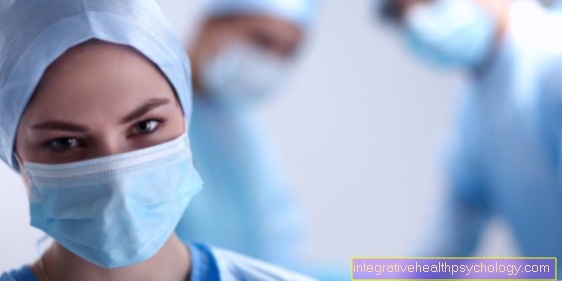


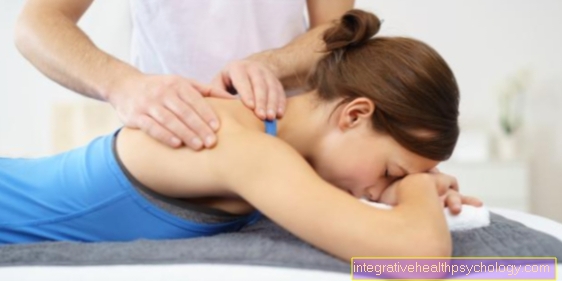

.jpg)








